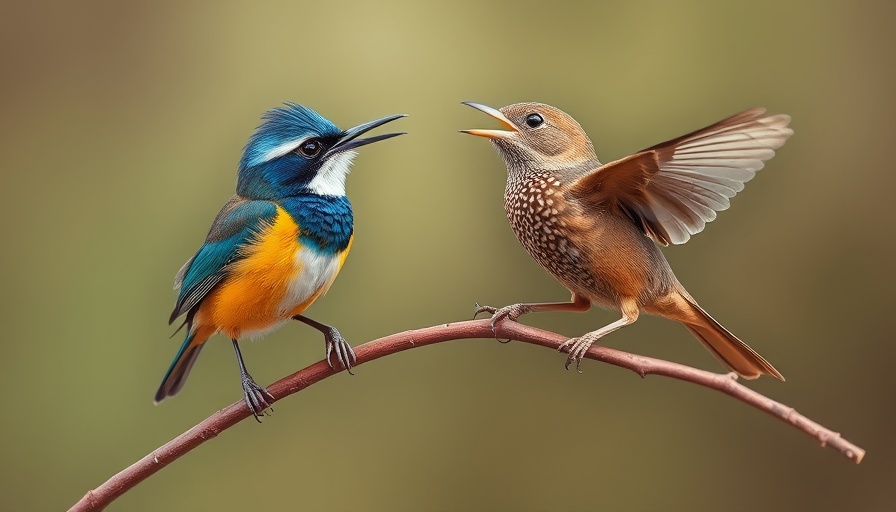
The Universal Alarm of Birds: A Warning Call Like No Other
Across continents and through countless generations, birds have developed a remarkable ability to communicate. A recent study illustrates this with a unique "whining" alarm call that has emerged independently among various bird species as an important tool for warning against brood parasites like cuckoos. This shared vocalization suggests not only inter-species cooperation but also offers insight into the origins of human language.
Why This Discovery Matters
Scientists found that 21 bird species from regions as diverse as Europe, Asia, Australia, and Africa share this call despite being separated by millions of years of evolution. This commonality is vital as it suggests that the call is not just an instinctive reaction but also a learned sound, indicating its crucial role in the survival of these birds and their offspring. Brood parasites, which lay their eggs in the nests of other bird species, pose a significant threat, making this alarm call indispensable for host birds.
The Science Behind Communication
The study, published in Nature Ecology and Evolution, reveals that when one bird hears the whining alarm emitted by another species, it instinctively investigates. This social learning creates an opportunity for younger or inexperienced birds to quickly adapt to their environment, learning which calls signify danger.
Evolutionary Insights: From Instinct to Language
This research echoes the theories proposed by Charles Darwin in the 19th century, suggesting that human language could have evolved from instinctive sounds. Birds adapting their calls to convey specific messages illustrates a stepping stone in the evolution of complex communication systems. By blending innate responses with learned behaviors, these avian species display a crucial example of how communication might have developed through evolutionary processes.
The Future of Animal Communication
The implications of this finding extend beyond just birds. Understanding how different species can exhibit a shared communication method opens new avenues for research into the social behaviors of animals. It challenges our perception of animal communication, suggesting it is more complex and interconnected than previously believed.
This fascinating insight into bird behavior not only enriches our understanding of nature but also emphasizes the importance of collaboration and communication in overcoming challenges—principles that resonate deeply with entrepreneurs and business professionals today.
As we learn from these birds, fostering cooperation within our teams can lead to innovative solutions and a greater understanding of our environment. The lessons from the avian world remind us that effective communication is vital for success.
If you found this exploration enlightening, consider reaching out to your network and encouraging discussions about communication strategies in your business. The value of shared knowledge is an asset that can foster growth!
 Add Row
Add Row  Add
Add 




Write A Comment